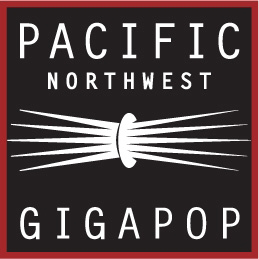NSF Awards CENIC an International Networking Grant for Operation of Pacific Wave
La Mirada, CA, & Berkeley, CA, Sept. 8, 2020 — The National Science Foundation has awarded CENIC a $4 million, five-year grant for continued operation and enhancement of Pacific Wave International Exchange. A joint project of CENIC and the Pacific Northwest Gigapop (PNWGP), Pacific Wave interconnects international Asia-Pacific research and education networks, key US Western regional research and education networks, leading national-scale research networks, and major commercial research cloud services.
Pacific Wave enables large-scale scientific workflows to accelerate discovery in all areas of science and engineering, including high-energy physics, earth sciences, astronomy and astrophysics, biology and biomedical engineering, as well as scalable visualization, virtual reality, machine learning (ML) and artificial intelligence (AI). Many projects, like the Vera C. Rubin Observatory (LSST) and Large Hadron Collider (LHC), feed increasing amounts of data to collaborating scientists served by Pacific Wave.
This NSF International Research Network Connections (IRNC) program grant will allow the expansion of Pacific Wave and further enable US scientific research collaborations through both increases in capacity, supporting demands for 400 Gbps-plus data rates, and the addition of new access points in Guam at the Guam Open Research and Education Exchange, a key meeting point for US and Asia-Pacific subsea cables, and Fairbanks, AK, an important nexus for Arctic research. The project, through a collaboration with sub-awardee University of California, San Diego (UCSD), will deploy an advanced measurement, monitoring, and analytic framework supported by UCSD’s Interactive Global Research Observatory Knowledgebase (IGROK) cluster.
Since initially receiving NSF funding in 2005 to connect Asia-Pacific research and education networks to its existing ultra-high-performance, geographically distributed, open peering and exchange fabric, Pacific Wave has grown to become the means that the US research community, and related communities in Mexico, Canada, and more than 30 Asia-Pacific nations, use daily to collaborate.
“This grant will support a critical peering and exchange fabric for the research community across the US and the world,” said CENIC President & CEO Louis Fox, principal investigator on this IRNC grant. “We look forward to working with other IRNC awardees, the NSF, and our Asia-Pacific colleagues as we continue to develop this critical infrastructure for international scientific research.”
“The world's hardest problems can only be solved through global collaboration,” added CEO of Pacific Northwest Gigapop, Ron Johnson, co-PI on the grant. “This grant will empower the research and education communities we serve both to pursue the next generation of innovations enabled by our networks, applications, and content, and to extend them for even broader impact to other key constituencies.”
Pacific Wave enables multi-institutional, multi-domain regional research efforts, such as the Pacific Research Platform (PRP), which is scaling to national (NRP) and global (GRP) models, and is a project of UCSD and UCB. In addition, Pacific Wave supports national, distributed computing partnerships, such as the Open Science Grid (OSG), and multi-user, programmable testbeds, such as FABRIC; and, efforts to develop services to simplify public cloud access for computer science research and education, such as CloudBank.
“These efforts empower researchers and research collaborations to achieve the network effects required to enable and accelerate the next waves of discovery in science, engineering, and medicine,” said Tom DeFanti, co-PI on both this grant and the NSF-funded Pacific Research Platform. “Pacific Wave serves as an innovation platform for next-generation networking, including enhancing connectivity to campus and wide-area ‘Science DMZ’ infrastructures like the PRP, which enables researchers to move data between labs and scientific instruments to collaborators’ sites, supercomputer centers, and data-repositories without performance degradation.”
Research and education (R&E) networks, including the networks at campuses, labs, and research sites, and especially the fabric that interconnects them, such as regional R&E networks, national R&E networks such as Internet2 and ESnet in the US, and the R&E and other peering and exchange fabrics that interconnect them all to each other and to clouds and the digital worlds of dotcoms, provide the substrate essential to communicate and collaborate across institutions and countries, and to access and share everything from library resources to powerful instruments and computational data.
“Pacific Wave continues to offer an effective option for research and education networks around the Pacific Rim to connect to members of the Internet2 community in the United States and beyond. We are delighted to continue Internet2’s longstanding collaboration with Pacific Wave as part of this new award,” said President and CEO of the national R&E network Internet2, Howard Pfeffer, who is also a co-PI on this grant. “Hundreds of research institutions across the US will benefit from this grant, enabling researchers to access scientific instruments and exchange data with their collaborators in the Asia-Pacific Region, and via our recently announced trans-continental fabric, AP-REX, to Europe.”
Pacific Wave’s 100-Gbps backbone has access points in Seattle, the San Francisco Bay Area, Los Angeles, and Tokyo. In addition, there are interconnection points of presence in Portland, Denver, and Chicago, where it directly connects with the StarLight International Exchange’s many network testbeds and connections to European R&E networks. Pacific Wave is the official USA National Science Foundation-funded interconnection and international peering facility, and Software-Defined Exchange (SDX) for Asia-Pacific networks.

